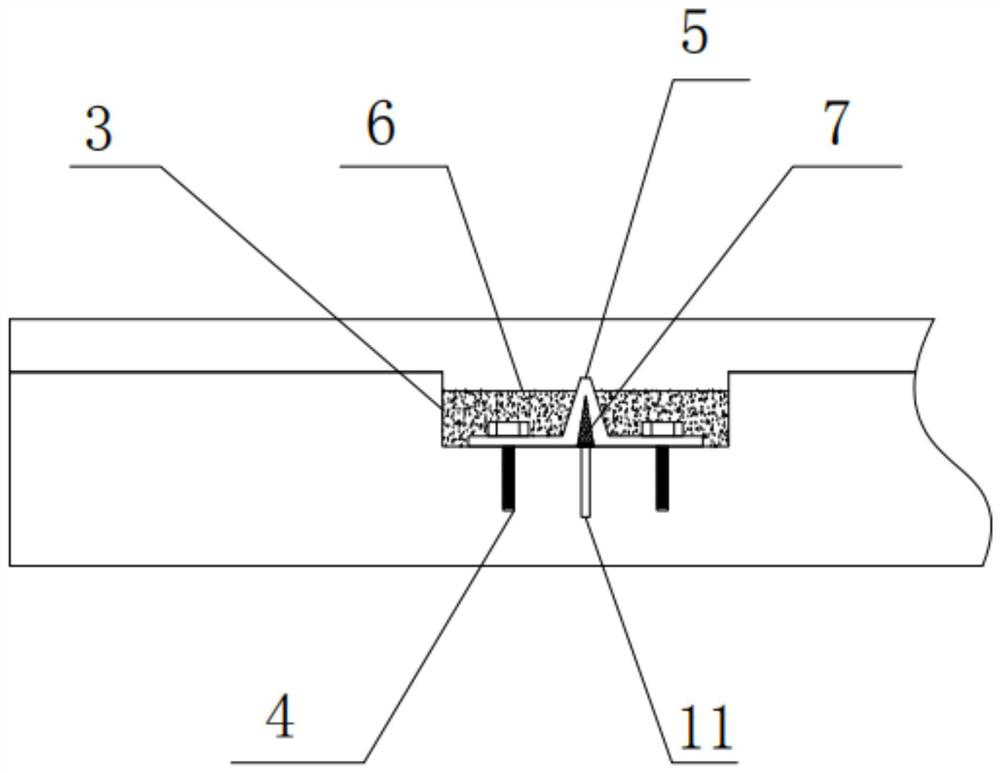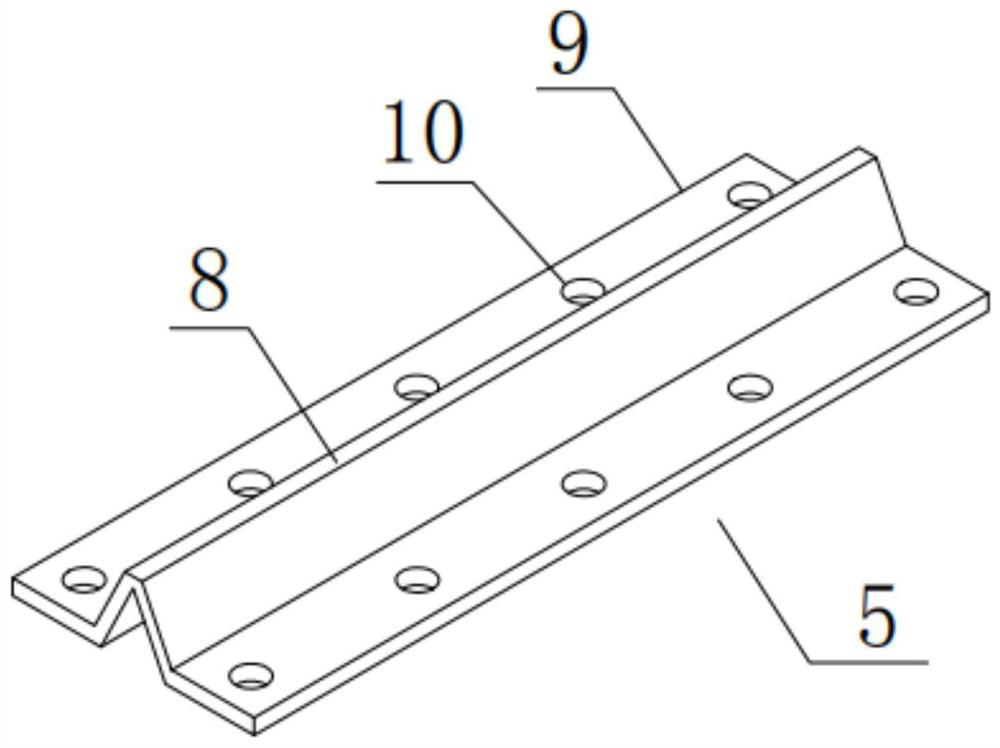A Construction Technology of Regular Pre-cracking Stress Compensation to Prevent Reflective Cracks in Overlay of Asphalt Surface
A stress compensation, asphalt surface layer technology, applied in coatings, anti-corrosion coatings, coagulation pavement paved on site, etc., to achieve the effect of improving service life
- Summary
- Abstract
- Description
- Claims
- Application Information
AI Technical Summary
Problems solved by technology
Method used
Image
Examples
Embodiment 1
[0052] A construction technique for regular pre-cracking stress compensation to prevent reflection cracks in asphalt surface overlay, such as Figure 1-2 shown, including the following steps:
[0053] Step 1. Carry out regular pre-cracking on the base surface of the original cement concrete base 1, carry out groove cutting at intervals of 2-2.5m, and cut out rectangular grooves 3 for the new cutting seam 11 and the original structural seam;
[0054] Step 2: Grind the horizontal surface in the rectangular groove 3, anchor into the nickel-plated anchor bolt 4, spray a layer of emulsified asphalt with a thickness of 0.5-1cm to level and solidify, and use a nut to anchor the stress compensation structure 5 in the rectangular groove. On the nickel-plated anchor bolt 4 in the groove 3;
[0055] Step 3: Grouting and filling the central triangular void of the stress compensation structure 5 through one end, the filling material 7 used for the grouting filling is composed of medium co...
Embodiment 2
[0078] The difference from Example 1 is that the surface of the stress compensation structure 5 is also provided with a protective layer, and the protective layer is prepared by the following method:
[0079] Take the following raw materials and weigh them by weight: 20 parts of polyurethane resin, 10 parts of calcium carbonate powder, 13 parts of iron red, 12 parts of aluminum powder, 8 parts of mica powder, 10 parts of graphite, 4 parts of organic bentonite, 3 parts of alcohol ester twelve , 3 parts of triethanolamine, 2 parts of emulsified silicone oil and 30 parts of methanol;
[0080] S1. Add the weighed alcohol ester dodecane, triethanolamine, emulsified silicone oil and methanol into the mixer and stir for 20min at a stirring speed of 600r / min to prepare a mixed solution;
[0081] S2. Add polyurethane resin, calcium carbonate powder, iron red, aluminum powder, mica powder, graphite and organic bentonite into a pulverizer and pulverize until the particle diameter of the ...
Embodiment 3
[0087] The difference with embodiment 2 is the preparation of protective layer, and its specific preparation method is as follows:
[0088] Take the following raw materials and weigh them by weight: 25 parts of polyurethane resin, 13 parts of calcium carbonate powder, 15 parts of iron red, 14 parts of aluminum powder, 9 parts of mica powder, 13 parts of graphite, 5 parts of organic bentonite, 4 parts of alcohol ester twelve , 4 parts of triethanolamine, 3 parts of emulsified silicone oil and 40 parts of methanol;
[0089] S1. Add the weighed alcohol ester dodecane, triethanolamine, emulsified silicone oil and methanol into the mixer and stir for 25min at a stirring speed of 700r / min to prepare a mixed solution;
[0090] S2. Add polyurethane resin, calcium carbonate powder, iron red, aluminum powder, mica powder, graphite and organic bentonite into a pulverizer and pulverize until the particle diameter of the material is not greater than 200nm to obtain a mixed powder material;...
PUM
| Property | Measurement | Unit |
|---|---|---|
| angle | aaaaa | aaaaa |
| thickness | aaaaa | aaaaa |
| width | aaaaa | aaaaa |
Abstract
Description
Claims
Application Information
 Login to View More
Login to View More - R&D
- Intellectual Property
- Life Sciences
- Materials
- Tech Scout
- Unparalleled Data Quality
- Higher Quality Content
- 60% Fewer Hallucinations
Browse by: Latest US Patents, China's latest patents, Technical Efficacy Thesaurus, Application Domain, Technology Topic, Popular Technical Reports.
© 2025 PatSnap. All rights reserved.Legal|Privacy policy|Modern Slavery Act Transparency Statement|Sitemap|About US| Contact US: help@patsnap.com



